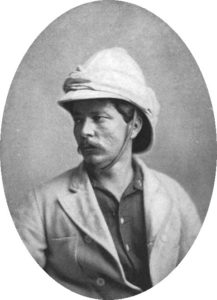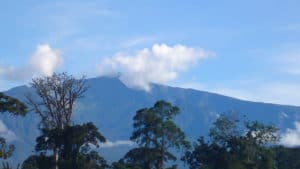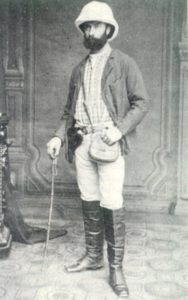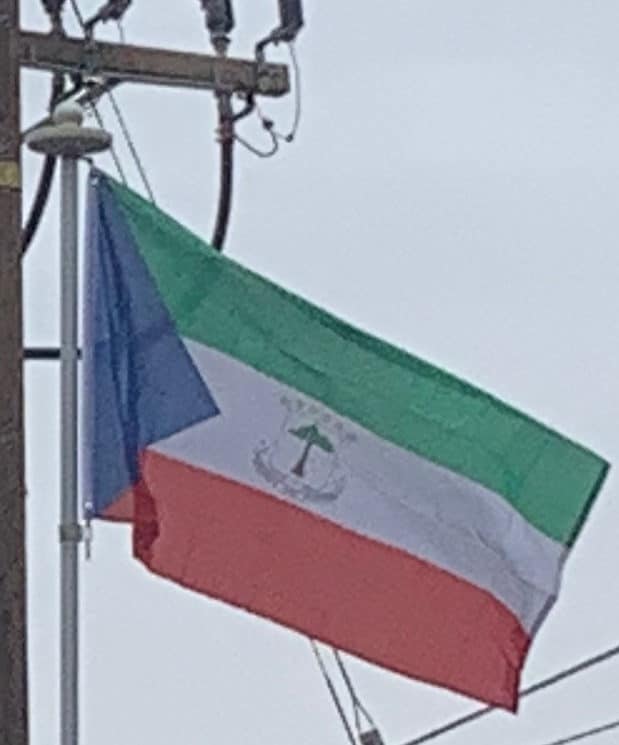
By 1870 the prognosis of whites that lived on the island was much improved after recommendations that they live in the highlands, and by 1884 much of the minimal administrative machinery and key plantations had moved to Basile hundreds of meters above sea level. Henry Morton Stanley had labelled Fernando Pó “a jewel which Spain did not polish” for refusing to enact such a policy. Despite the improved survival chances of Europeans living on the island, Mary Kingsley, who was staying on the island still described Fernando Pó as ‘a more uncomfortable form of execution’ for Spaniards appointed there.
There was also a trickle of immigration from the neighboring Portuguese islands, escaped slaves and prospective planters. Although a few of the Fernandinos were Catholic and Spanish-speaking, about nine-tenths of them were Protestant and English-speaking on the eve of the First World War, and pidgin English was the lingua franca of the island. The Sierra Leoneans were particularly well placed as planters while labor recruitment on the Windward coast continued, for they kept family and other connections there and could easily arrange a supply of labor. The Fernandinos proved to become effective traders and middlemen between the natives and Europeans. A freed slave from the West Indies by way of Sierra Leone named William Pratt established the cocoa crop on Fernando Pó, forever altering the destiny of the colony.

Early 20th Century (1900–1945):
Spain had neglected to occupy the large area in the Bight of Biafra to which it had right by treaty, and the French had busily expanded their occupation at the expense of the area claimed by Spain. Madrid had failed to back the explorations of men like Manuel Iradier who had signed treaties in the interior as far as Gabon and Cameroon, leaving much of the land out of ‘effective occupation’ as demanded by the terms of the 1885 Berlin Conference, and events in Cuba and the Spanish–American-War distracted Madrid at an inopportune moment. Minimal government backing for mainland annexation came solely as a result of public opinion and a need for labor on Fernando Pó.

The eventual Treaty of Paris in 1900 left Spain with the continental enclave of Rio Muni, a mere 26,000 km2 out of the 300,000 stretching east to the Ubangi river which the Spaniards had initially claimed. The tiny enclave was far smaller than what the Spaniards had considered themselves rightfully entitled to under their claims and the Treaty of El Pardo. The humiliation of the Franco-Spanish negotiations, combined with the disaster in Cuba led to the head of the Spanish negotiating team, Pedro Gover y Tovar committing suicide on the voyage home on 21 October 1901. Iradier himself died in despair in 1911, and it would be decades before his achievements would be recognised by Spanish popular opinion when the port of Cogo was renamed Puerto Iradier in his honour.
The opening years of the twentieth century saw a new generation of Spanish immigrants. Land regulations issued in 1904–1905 favoured Spaniards, and most of the later big planters arrived from Spain after that. An agreement made with Liberia made in 1914 to import cheap labor greatly favoured wealthy men with ready access to the state, and the shift in labor supplies from Liberia to Río Muni increased this advantage. Due to malpractice however, the Liberian government eventually ended the treaty after embarrassing revelations about the state of Liberian workers on Fernando Pó in the Christy Report which brought down the country’s president Charles D. B. King in 1930. In 1940, an estimated 20% of the colony’s cocoa production came from African-owned land, nearly all of it was in the hands of Fernandinos.
